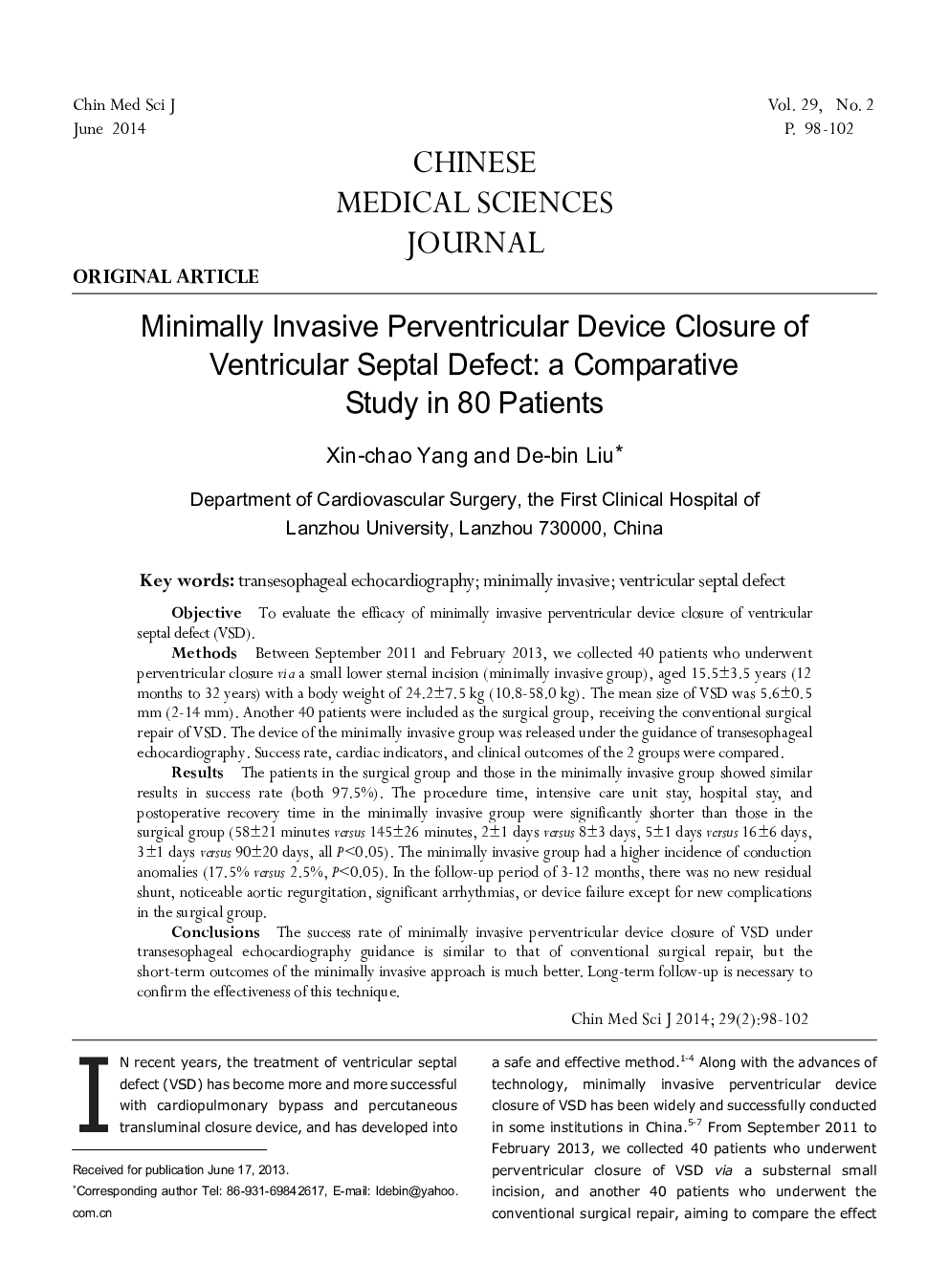| Article ID | Journal | Published Year | Pages | File Type |
|---|---|---|---|---|
| 3459530 | Chinese Medical Sciences Journal | 2014 | 5 Pages |
ObjectiveTo evaluate the efficacy of minimally invasive perventricular device closure of ventricular septal defect (VSD).MethodsBetween September 2011 and February 2013, we collected 40 patients who underwent perventricular closure via a small lower sternal incision (minimally invasive group), aged 15.5±3.5 years (12 months to 32 years) with a body weight of 24.2±7.5 kg (10.8-58.0 kg). The mean size of VSD was 5.6±0.5 mm (2-14 mm). Another 40 patients were included as the surgical group, receiving the conventional surgical repair of VSD. The device of the minimally invasive group was released under the guidance of transesophageal echocardiography. Success rate, cardiac indicators, and clinical outcomes of the 2 groups were compared.ResultsThe patients in the surgical group and those in the minimally invasive group showed similar results in success rate (both 97.5%). The procedure time, intensive care unit stay, hospital stay, and postoperative recovery time in the minimally invasive group were significantly shorter than those in the surgical group (58±21 minutes versus 145±26 minutes, 2±1 days versus 8±3 days, 5±1 days versus 16±6 days, 3±1 days versus 90±20 days, all P<0.05). The minimally invasive group had a higher incidence of conduction anomalies (17.5% versus 2.5%, P<0.05). In the follow-up period of 3-12 months, there was no new residual shunt, noticeable aortic regurgitation, significant arrhythmias, or device failure except for new complications in the surgical group.ConclusionsThe success rate of minimally invasive perventricular device closure of VSD under transesophageal echocardiography guidance is similar to that of conventional surgical repair, but the short-term outcomes of the minimally invasive approach is much better. Long-term follow-up is necessary to confirm the effectiveness of this technique.
